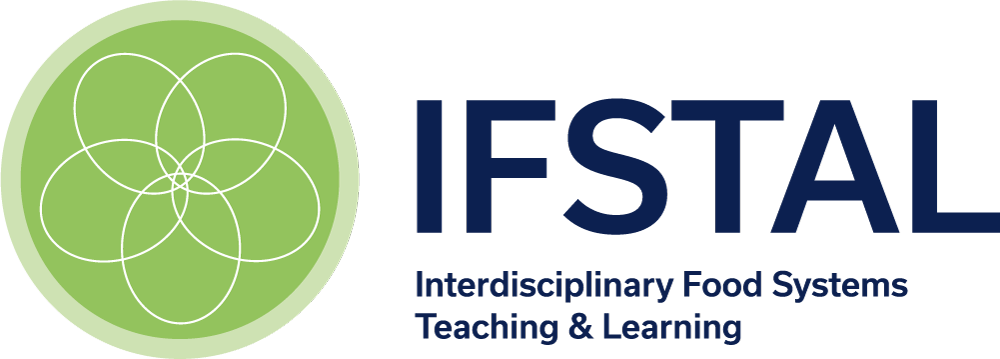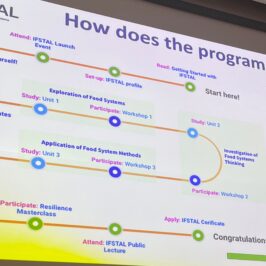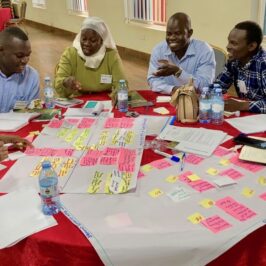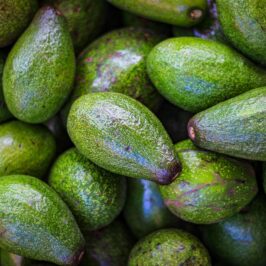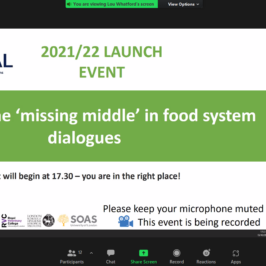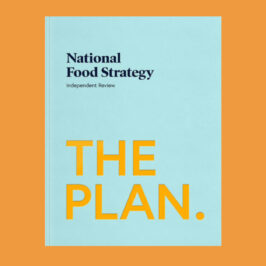Food Matters Live (FML) is an annual event that brings together over 600 exhibitors, most of them companies marketing their latest food products, but also universities and other organisations working on and researching all aspects of food and nutrition. 15,000 visitors are expected to attend this edition of FML. IFSTAL has a stand at FML this year. The event is free and an interesting fieldtrip to learn about the latest innovations and marketing strategies used by industry. From psychologists researching the science of food choices, economists offering services to manufacturers, engineers designing growing structures for vertical farming to chemists extracting molecules from alternative plants to replicate the flavour or smell of other plants whose supply chain might be at risk or simply to reduce sugar content, it was fascinating to see the wide range of disciplines working in the food system
There are also many free talks and seminars. I attended two talks.
One of them was titled: “Persuasive packaging: creative designs to influence healthy food choice”. One of the presentations in this session was by Pearfisher, a creative design and branding agency. They consider food to be “a cultural universal” and identify three current trends, each with an associated design strategy:
- Naturally active: products with a short list of recognisable ingredients often appearing in the front label. Bold, simple and information-driven design. Under this category, they gave an example of a vegetable juice company using a pantone colour palette to link the colours to the ingredients and the different juices.
- Healthy hedonism and the growth of “healthy indulgences” as a rebellion against orthorexia. There is a bigger palate and more curiosity from consumers in affluent countries to try new ingredients and flavours. The millennial generation is going off alcohol in favour of other “sophisticated distilled non-alcoholic spirits”. This trend could have some positive impacts on public health. Some dairy farmers however, worried about prices below the cost of production they are getting for their milk, are moving in the opposite direction making vodka out of milk.
- Food pharma: food not as fuel, but as an antidote. The example given here was quite futuristic: Everything +. This product is basically water but with a twist. The team behind Everything + has designed their product based on existing evidence that the average human needs 640ml of water to rehydrate in the morning. But average does not sell. A tailor-made capsule of nutrients gets added to the bottle. A wide variety of capsules is available. The consumer gets recommendations based on how well or bad they have slept and their plan for the day ahead. This product is trying to replace the “morning coffee moment” that many people start their days with. Pearlfisher predicts a strong growth in these type of personalized foods but suggested the language in this sector is still very rudimentary and needs to move away from links with the pharmaceutical industry and be more “inspiring”.
The growth of pharma food and the life sciences paradigm has been theorised by Lang and Heasman in their Food Wars book.
What consumers are these companies targeting? What producers and consumers can afford these innovations? What does this focus on individuals and personalised foods mean for public health?
The second talk I attended was titled: “Changing dietary behaviour: the retailer perspective”. Speakers from Pret a Manger, Marks & Spencer and Iceland shared some of their current work in this area. For example, Pret a Manger has opened a branch in central London serving vegetarian options only. This store is being used as a live lab to do customer research and fast track the company’s product development plan. Iceland was talking about how they are working on their sugary drinks range to make sure it is under the sugar tax levy limits but without affecting taste. It is interesting to think how can taste be modified by introducing a fiscal measure, and how this change in taste can be communicated, marketed and profited on.
All the retailers agreed that consumers are increasingly driving demand more healthy options. However, M&S highlighted customers’ perception of “healthy” is very diverse. For some it might mean gluten free, while for others, it is about an increase in fruit and vegetable consumption. As we are studying in IFSTAL, your perspective shapes the way you frame a concept, a problem and thus, potential solutions.
Brexit was mentioned by several exhibitors and speakers. Are levies going to make healthy options for expensive for UK consumers since the UK imports a high percentage of fruit and vegetables? Or will domestic food production increase? You can read more about the potential impacts of Brexit in the food system in this briefing paper from the Food Research Collaboration.
The retailers discussed how there is an ongoing trend for reformulation of products to reduce the amount of salt, sugar and fat. It was accepted that although this was a positive step, it meant that there was too much salt, sugar and fat to start with, that manufacturers had gone too far in the last few years and that now “we are turning the clock”.
We had IFSTAL academics speaking at a number of sessions.
Dr Rosemary Collier from Warwick University will be part of the panel discussing The future of global, sustainable, nutritious diets, Professor Corinna Hawkes, the Director of the Centre for Food Policy at City, University of London spoke at this session: Dietary economics: what’s the cost of good nutrition? And Dr John Ingram spoke at a session Exploring the future of our food – delivering a food system paradigm shift.
Food Matters Live took place between 22-24th November, at ExCeL London
